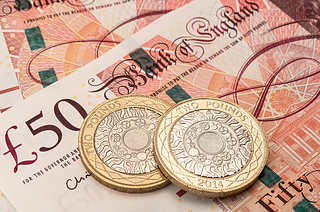GBP/USD hits multi-year high post Powell dovish pivot, rose above 1.3200
|
- GBP/USD jumps over 1% after Powell signals potential rate cuts, reaching its highest level in two years.
- Powell’s Jackson Hole speech emphasizes data-dependent rate adjustments, with confidence in inflation returning to 2%.
- US Dollar Index (DXY) drops 0.80% to 100.71, while the US 10-year Treasury yield falls to 3.81%, reflecting market expectations for a September rate cut.
The GBP/USD climbed sharply during the North American session after Federal Reserve Chair Jerome Powell gave the green light to cutting interest rates, as he’s confident that inflation is edging towards the central bank's 2% goal. The pair traded above 1.3200, at around new two-year highs, gaining over 1%.
GBP/USD hits new two-year highs above 1.3200
At his Jackson Hole speech, Jerome Powell said, “The time has come for policy to adjust,” adding that the size and timing of rate cuts would be data dependent. He said he’s confident that inflation “is on a sustainable path back to 2%,” though he mentioned that risks in employment had tilted to the upside.
Meanwhile, traders of Fed funds futures had priced in a 33% chance of the Fed cutting its interest rates by 50 basis points at the upcoming September meeting.
In response to Powell’s speech, traders dumped the Greenback, which, according to the US Dollar Index (DXY), has fallen 0.80% and exchanged hands at 100.71. At the same time, the US 10-year Treasury note yield dropped four basis points to 3.81%.
GBP/USD Price Forecast: Technical outlook
From a technical perspective, the GBP/USD uptrend remains intact, but if traders fail to sustain the exchange rate above 1.3200, this could exacerbate a pullback. Buyers remain in charge, according to the Relative Strength Index (RSI), which despite being at overbought conditions, due to the strength of the trend, has not hit the 80 level. Therefore, the path pof least resistance is tilted to the upside.
The GBP/USD first resistance would be 1.3200. A breach of the latter will expose the year-to-date (YTD) high at 1.3230, followed by 1.3250 and the 1.3300 mark.
In the event of a correction, the first support for GBP/USD is seen at 1.3100. Once surpassed, the next support would be the 1.3045 July 17 daily high, previous resistance turned support, ahead of 1.3000.
Pound Sterling FAQs
The Pound Sterling (GBP) is the oldest currency in the world (886 AD) and the official currency of the United Kingdom. It is the fourth most traded unit for foreign exchange (FX) in the world, accounting for 12% of all transactions, averaging $630 billion a day, according to 2022 data. Its key trading pairs are GBP/USD, aka ‘Cable’, which accounts for 11% of FX, GBP/JPY, or the ‘Dragon’ as it is known by traders (3%), and EUR/GBP (2%). The Pound Sterling is issued by the Bank of England (BoE).
The single most important factor influencing the value of the Pound Sterling is monetary policy decided by the Bank of England. The BoE bases its decisions on whether it has achieved its primary goal of “price stability” – a steady inflation rate of around 2%. Its primary tool for achieving this is the adjustment of interest rates. When inflation is too high, the BoE will try to rein it in by raising interest rates, making it more expensive for people and businesses to access credit. This is generally positive for GBP, as higher interest rates make the UK a more attractive place for global investors to park their money. When inflation falls too low it is a sign economic growth is slowing. In this scenario, the BoE will consider lowering interest rates to cheapen credit so businesses will borrow more to invest in growth-generating projects.
Data releases gauge the health of the economy and can impact the value of the Pound Sterling. Indicators such as GDP, Manufacturing and Services PMIs, and employment can all influence the direction of the GBP. A strong economy is good for Sterling. Not only does it attract more foreign investment but it may encourage the BoE to put up interest rates, which will directly strengthen GBP. Otherwise, if economic data is weak, the Pound Sterling is likely to fall.
Another significant data release for the Pound Sterling is the Trade Balance. This indicator measures the difference between what a country earns from its exports and what it spends on imports over a given period. If a country produces highly sought-after exports, its currency will benefit purely from the extra demand created from foreign buyers seeking to purchase these goods. Therefore, a positive net Trade Balance strengthens a currency and vice versa for a negative balance.
Information on these pages contains forward-looking statements that involve risks and uncertainties. Markets and instruments profiled on this page are for informational purposes only and should not in any way come across as a recommendation to buy or sell in these assets. You should do your own thorough research before making any investment decisions. FXStreet does not in any way guarantee that this information is free from mistakes, errors, or material misstatements. It also does not guarantee that this information is of a timely nature. Investing in Open Markets involves a great deal of risk, including the loss of all or a portion of your investment, as well as emotional distress. All risks, losses and costs associated with investing, including total loss of principal, are your responsibility. The views and opinions expressed in this article are those of the authors and do not necessarily reflect the official policy or position of FXStreet nor its advertisers.
